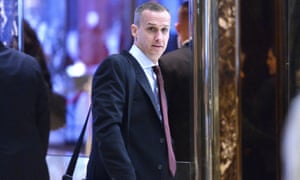As we leave the EU, the UK can turn its back on the austerity policies that have been the hallmark of the euro area. My main argument against staying in the EU has been the poor economic record of the EU as a whole, and the eurozone in particular. The performance has got worse the more the EU has developed joint policies and central controls.

Housing gets £4bn boost to increase number of new homes
The UK public warmed to the idea of spending our own money on our own priorities in the referendum campaign. The main issue between leave and remain was the money. Remain tried to dismiss its importance by claiming there was in practice little money at stake, and disagreed strongly with any reference to the gross figure for UK contributions.
The public did not take away one particular figure from the debate, but did believe that we contributed substantial money that it would be useful to spend at home. Cancelling the contributions would also make an important reduction in our large balance of payments deficit, as every penny we send and do not get back swells the deficit, just as surely as if we bought another import.
During the campaign I released a draft post-Brexit budget, showing how we could scrap VAT on domestic fuel, tampons and green products, and boost spending substantially on the NHS.
The government will be able to choose what to do once we have stopped the payments. The autumn statement showed a saving of a net contribution of £11.6bn in 2019-20 once we are out of the EU, as well as additional domestic spending in place of spending in the UK by the EU currently.
I am glad the chancellor has also adopted more flexible rules for the budget deficit. There is no need to genuflect to the Maastricht debt and deficit criteria once we leave, nor to pretend that we are about to get our overall debt down to 60% of GDP, as is required by those rules. The UK economy needs further stimulus, as the autumn statement acknowledged. There are roads and railway lines to be built, new power stations to be added, more water storage, schools and hospitals to cater for the rising population.
The government is right to say the UK needs to invest more. We need to make new provision for all the additional people who have joined the country in recent years, and to improve the efficiency of our infrastructure. The country is well behind in meeting demand for train and road capacity, and in energy provision.
The UK also needs to make, grow and provide more for its own needs. Leaving the EU will enable the UK to undertake a major campaign for import substitution. When we have our own fishing policy we could move back to being net exporters, instead of being importers. The common fisheries policy means too much of our fish is taken by other member states, leaving us short for our own needs. Designing our own agriculture policy will mean we can put behind us the quotas and regulations that have held back UK output during our years in the EU. We can change our procurement rules, so that the government when spending taxpayers’ money can ensure more is bought from home suppliers.
Why do we have a balance of payments surplus with the rest of the world but a deficit with our EU neighbours?
The UK is embarking on a substantial expansion of housebuilding. Too many materials and components for our new homes are imported. The lower level of sterling provides an opportunity for the UK to put in more brick, block and tile capacity, to prefabricate and manufacture more of the components and systems a new home needs. If more of the home is fabricated off-site – as happens in Germany and Scandinavia – we reduce the impact of bad weather, of labour shortages and other inefficiencies on the building site. Industry by industry there are opportunities for suitable investment and entrepreneurial activity, to meet more of the UK’s own demands. This will be good for jobs, and better for the environment, when more is produced close to the place of consumption.
One of the great unanswered questions of our time in the EU is: why do we run a balance of payments surplus with the rest of the world but a deficit with our EU neighbours? Why has it been so large and so persistent? Part of the reason rests in the way the EU rules were organised.
Early liberalisation was designed to help the sectors the continent was best at, rather than the sectors where the UK had a relative advantage. The continental competitors soon outpaced us in their better areas, leading to UK factory closures and job losses in areas like shipbuilding steel production and cars in the early years of membership. The special designs of the common agricultural and fishing policies also led to larger import bills for us.
Leaving the EU has coincided, so far, with a fall in the value of the pound. The UK should now be very competitive. It is time for business to respond to the favourable levels of domestic demand, and to work with government to put in the extra capacity we need to meet more of our own requirements. Prosperity, not austerity, should be the watchword.
Early liberalisation was designed to help the sectors the continent was best at, rather than the sectors where the UK had a relative advantage. The continental competitors soon outpaced us in their better areas, leading to UK factory closures and job losses in areas like shipbuilding steel production and cars in the early years of membership. The special designs of the common agricultural and fishing policies also led to larger import bills for us.
Leaving the EU has coincided, so far, with a fall in the value of the pound. The UK should now be very competitive. It is time for business to respond to the favourable levels of domestic demand, and to work with government to put in the extra capacity we need to meet more of our own requirements. Prosperity, not austerity, should be the watchword.
 Dropped from the Test side after a run of low scores, Jonny Bairstow worked out his technical flaws and became a prolific run scorer © Getty Images
Dropped from the Test side after a run of low scores, Jonny Bairstow worked out his technical flaws and became a prolific run scorer © Getty Images

